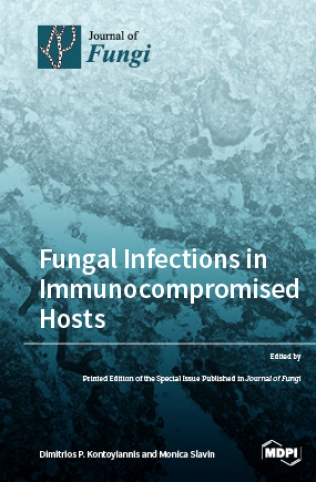将真菌的 DNA拓扑异构酶 I 和 II 酶作为开发新型抗真菌药物的研究模型的回顾与展望
IF 4.2
2区 生物学
Q2 MICROBIOLOGY
引用次数: 0
摘要
真菌感染是一个日益严重的公共卫生问题,主要源于两种现象。首先,某些疾病(如艾滋病和 COVID-19)会削弱免疫系统,使患者容易感染机会性病原体。其次,越来越多的致病真菌产生了多重抗药性。因此,需要新的抗真菌药物,以真菌生物的 I 型和 II 型 DNA 拓扑异构酶为新的治疗靶点。本文总结了现有文献中关于人类、其他两种哺乳动物和 29 种真菌(包括担子菌纲和子囊菌纲)中 I 型和 II 型拓扑异构酶(Topo)的生物学、拓扑学、结构特征和基因的信息。本文介绍了这些酶作为抗真菌治疗替代靶点的证据,以及广泛的 Topo I 和 II 抑制剂。研究揭示了负责编码真菌生物拓扑 I 和 II 酶的基因,以及酶活性位点上与拓扑异构酶抑制剂结合模式有关的氨基酸残基和核苷酸残基。这些残基高度保守。根据分子对接研究,抗真菌拓扑 I 和 II 抑制剂与相应酶的活性位点具有良好的亲和力。本综述中提出的证据支持将拓扑 I 和 II 酶作为新型抗真菌药物分子靶点的建议,这些药物将来可用于治疗由真菌引起的感染的联合疗法。本文章由计算机程序翻译,如有差异,请以英文原文为准。
Review and Current Perspectives on DNA Topoisomerase I and II Enzymes of Fungi as Study Models for the Development of New Antifungal Drugs
Fungal infections represent a growing public health problem, mainly stemming from two phenomena. Firstly, certain diseases (e.g., AIDS and COVID-19) have emerged that weaken the immune system, leaving patients susceptible to opportunistic pathogens. Secondly, an increasing number of pathogenic fungi are developing multi-drug resistance. Consequently, there is a need for new antifungal drugs with novel therapeutic targets, such as type I and II DNA topoisomerase enzymes of fungal organisms. This contribution summarizes the available information in the literature on the biology, topology, structural characteristics, and genes of topoisomerase (Topo) I and II enzymes in humans, two other mammals, and 29 fungi (including Basidiomycetes and Ascomycetes). The evidence of these enzymes as alternative targets for antifungal therapy is presented, as is a broad spectrum of Topo I and II inhibitors. Research has revealed the genes responsible for encoding the Topo I and II enzymes of fungal organisms and the amino acid residues and nucleotide residues at the active sites of the enzymes that are involved in the binding mode of topoisomerase inhibitors. Such residues are highly conserved. According to molecular docking studies, antifungal Topo I and II inhibitors have good affinity for the active site of the respective enzymes. The evidence presented in the current review supports the proposal of the suitability of Topo I and II enzymes as molecular targets for new antifungal drugs, which may be used in the future in combined therapies for the treatment of infections caused by fungal organisms.
求助全文
通过发布文献求助,成功后即可免费获取论文全文。
去求助
来源期刊

Journal of Fungi
Medicine-Microbiology (medical)
CiteScore
6.70
自引率
14.90%
发文量
1151
审稿时长
11 weeks
期刊介绍:
Journal of Fungi (ISSN 2309-608X) is an international, peer-reviewed scientific open access journal that provides an advanced forum for studies related to pathogenic fungi, fungal biology, and all other aspects of fungal research. The journal publishes reviews, regular research papers, and communications in quarterly issues. Our aim is to encourage scientists to publish their experimental and theoretical results in as much detail as possible. Therefore, there is no restriction on paper length. Full experimental details must be provided so that the results can be reproduced.
 求助内容:
求助内容: 应助结果提醒方式:
应助结果提醒方式:


